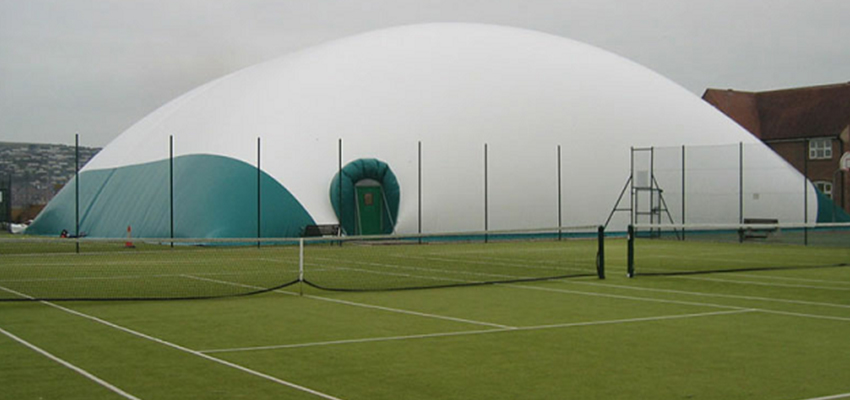The air membrane building has no beam column structure and does not need rigid support. It supports the design form of the whole building system by air pressure.
In 1917, William Lanchester, an Englishman, first proposed air supported tents for field hospitals. In 1946, Walter bode of the United States built a membrane dome supported by gas for the first time. The membrane material is nylon fiber cloth, which is used for the military radar protective cover of the United States. In 1963, the United States built the world's first air film tennis stadium in New York. Over the past 40 years, tens of thousands of air film buildings of different sizes have been built around the world.

The air membrane building has no beam column structure and does not need rigid support. It supports the design form of the whole building system by air pressure. Its span can reach 180 meters, and its length can be extended arbitrarily. Under the same span, its height can be three to four times higher than other building forms, which also increases its volume, and facilitates the freedom of various giant machines and locomotives in the air Rotation and movement within the membrane.
The "green" of the building is not the general sense of three-dimensional greening, but refers to the building as harmless to the environment as possible, make full use of available natural resources, and do not damage the basic ecological balance of the environment. Air membrane building system is a kind of building form that "uses high-quality building fiber membrane material as the building" shell ", supports the" shell "through the air pressure difference between indoor and outdoor, forms the main body of the building, and does not need any frame and beam column support indoors.
The inflatable membrane sports hall has a certain sound insulation effect, and its sound insulation performance can be further improved through design optimization.
Winter is here, and everyone wants to find a warm and comfortable place to exercise, right? The membrane sports arena is definitely a good choice!
In today's society where environmental protection is increasingly becoming a focus of attention, which company is good for covering sewage tanks with anti lifting membranes? How to choose a trustworthy partner among the many companies that provide sewage tank anti lifting membrane covering services? The following points provided by the Zhanji editor may be helpful for your decision-making.
When we use exhaust gas treatment equipment, we often overlook the maintenance and upkeep of the equipment.
Shanghai Zhanji Fabric Structure Co., Ltd. is a professional membrane structure vendor who has an expert engineering design and construction team, and are at the leading position in this membrane field all over China.